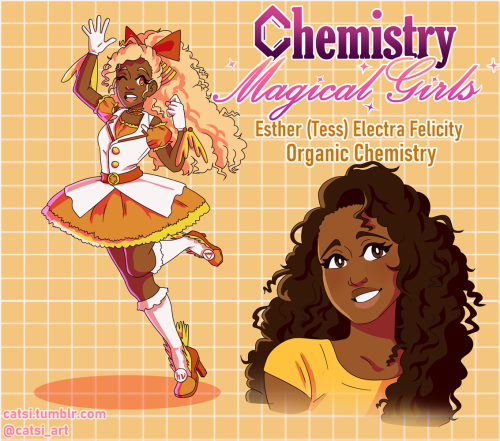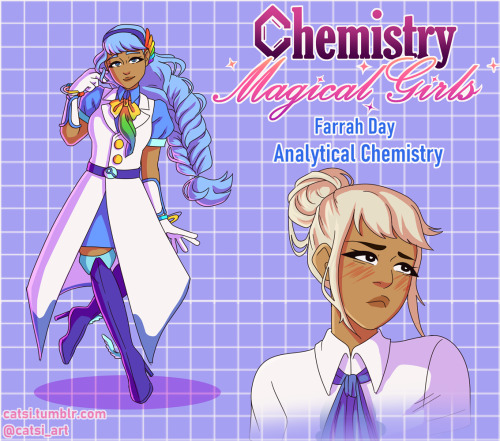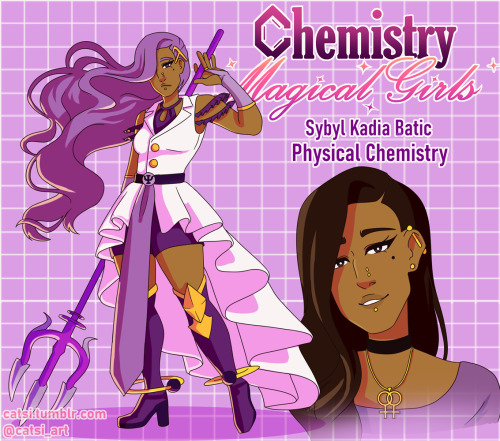You’re Lying - Those Are Way Cooler Than Dumb Fireworks!
You’re lying - those are way cooler than dumb fireworks!
I really don’t like fireworks. They’re environmentally damaging, loud, and they hide the stars!
So yeah, July 4th wasn’t too happy for me.
WANT MORE? GET YOUR HEAD STUCK IN THE STARS AT MY BLOG!

A camera on the Vosges mountains in France captured these surprising “fireworks” above the horizon. Generated over intense thunderstorms, these brief and mysterious flashes have come to be known as red sprites. The transient luminous events are caused by electrical breakdown at altitudes of 50 to 100 kilometers. That puts them in the mesophere, the coldest layer of planet Earth's atmosphere. The glow beneath the sprites is from lightening under the clouds.
On the right, the video frames have captured another summertime apparition from the mesophere. The silvery veins of light are polar mesospheric clouds. Also known as noctilucent or night shining clouds, the icy clouds still reflect the sunlight when the Sun is below the horizon. Image Credit & Copyright: Stephane Vetter (TWAN, Nuits sacrees)
More Posts from Acosmicgeek and Others
So I actually did the calculations and the surface area of Jupiter could probably fit around 11,474,491,000,000 football fields.
Okay so I googled it and the radius of Jupiter is 43,441 miles. However, I’m going to convert that into meters, which’ll make that radius a cool 69,911,513 m. Next up I’ll plug that into the surface area of a sphere formula (A= 4πr^2) which will get us approximately 6.14 x 10^16 m^2 (or roughly 61,400,000,000,000,000 m^2).
Next, I found the area of one football field to be around 5,351 m^2. Dividing the surface area of Jupiter by the surface area of one football field, we can find out how many football fields will fit onto the surface of Jupiter. And that is 1.1474491 x 10^13. Calculating that, that will be 11,474,491,000,000 football fields (11 trillion or so). Oh boy.
For comparison’s sake, the universe is estimated to have AT MOST 2 trillion galaxies! Which means that Jupiter likely could fit more football fields than the universe has galaxies. Another example, there are an estimated billion trillion stars in the observable universe. Jupiter’s football fields account for half of the stars in our observable universe.
I actually tried to find out how many football fields were in the U.S. for comparison but I still can’t find a statistic.
But also that’s pretty hilarious xD
WANT MORE? GET YOUR HEAD STUCK IN THE STARS AT MY BLOG!

No WaY

THE LIFE OF A STAR: STAR NURSERIES
How did this "star stuff" come to exist? The life of stars is a cycle: a star's birth came from a star's death. When it comes to star birth, the star nebulae reigns supreme.
A Nebula (take a look at pictures, they're some of the most beautiful things in the universe) is a giant cloud of dust and gas. This is the region where new stars are formed. Nebulae live in the space in between stars and between galaxies - called interstellar space (or the interstellar medium) - and are often formed by dying stars and supernovas (NASA).
This cloud of particles and gases is mostly made of hydrogen (remember - stars mostly fuse hydrogen!). These appear as patches of light (emission, reflection, or planetary-types) or a dark region against a brighter background (dark-type). This depends on whether "... it reflects light from nearby stars, emits its own light, or re-emits ultraviolet radiation from nearby stars as visible light. If it absorbs light, the nebula appears as a dark patch ..." (The Free Dictionary).
There are four main types of nebulae: emission, reflection, dark, and planetary nebulae.
Emission nebulae are a high-temperature gathering of particles, of which are energized by a nearby ultra-violent-light-emitting star. These particles release radiation as they fall to lower energy states (for more information on electrons moving to energized states and falling back to lower states, read this). This radiation is red because the spectra/wavelength of photons emitted by hydrogen happens to be shifted to the red-end of the visible light spectrum. There are more particles than hydrogen in the nebulae, but hydrogen is the most abundant.
Next up is the reflection nebulae - which reflect the light of nearby stars. As opposed to emission nebulae, reflection are blue, because "the size of the dust grains causes blue light to be reflected more efficiently than red light, so these reflection nebulae frequently appear blue in color ...." The Reddening Law of Nebula describes that the interstellar dust which forms nebulae affects shorter wavelength light more than longer-wavelengths (CalTech).
Then there's the "emo" nebulae: dark nebulae. These are, very simply, nebulae which block light from any nearby sources. The lack of light can cause dark nebulae to be very cold and dark (hence their name), and the heat needed for star formation comes in the form of cosmic rays and gravitational energy as dust gathers. Many stars near dark nebulae emit high levels of infrared light (this type is much more intricate then I've explained, but that summary will do for now. If you're interested in learning more, read this).
Finally, there are planetary nebulae. And these aren't nebulae made of planets. These nebulae are formed when stars (near the ends of their life) throw out a shell of dust. The result is a small, spherical shape, which looks like a planet (hence their name) (METU).
Nebulae themselves are essentially formed by gas and dust particles clumping together by the attractive force of gravity. The clumps increase in density until they form areas where the density is great enough to form massive stars. These massive stars emit ultraviolet radiation, which ionizes surrounding gas and causes photon emissions, allowing us to see nebulae (like we discussed in the types of nebulae). Universe Today said, "Even though the interstellar gas is very dispersed, the amount of matter adds up over the vast distances between the stars. And eventually, and with enough gravitational attraction between clouds, this matter can coalesce and collapse to forms stars and planetary systems."
Britannica notes the structure of nebulae in terms of density and chemical composition: "Various regions exhibit an enormous range of densities and temperatures. Within the Galaxy’s spiral arms about half the mass of the interstellar medium is concentrated in molecular clouds, in which hydrogen occurs in molecular form (H2) and temperatures are as low as 10 kelvins (K). These clouds are inconspicuous optically and are detected principally by their carbon monoxide (CO) emissions in the millimeter wavelength range. Their densities in the regions studied by CO emissions are typically 1,000 H2 molecules per cubic cm. At the other extreme is the gas between the clouds, with a temperature of 10 million K and a density of only 0.001 H+ ion per cubic cm." The composition of nebulae also aligns with what we see with the rest of the universe, mostly being made of hydrogen and the rest being other particles, particularly helium (this matches up with the composition of stars!).
Fun-fact: supernova can create nebulae, but also destroy them. Possibly the most famous nebulae, the "Pillars of Creation," the Eagle Nebula, is hypothesized to have been destroyed by the shockwave of a supernova 6,000 years ago. Since it takes light 7,000 years to travel from that nebulae to the Earth, we won't know for another 1,000 years (Spitzer). If you're wondering how exactly we could know how far nebulae are, check out this article about a new way to measure that distance using the "surface brightness-radius relation", and other distance measurements (such as the parallax measurement).
Now, why did I just explain the intricacies of nebulae in 900 words when this series is supposed to be about stars? Well, when we talk about the birth of a star (and the death sometimes, too), nebulae become important. Take note of what we've discussed in this article: formation, chemical composition, and density. It'll be important in our next chapter (and nuclear fusion, but when is that not important?).
First - Chapter 1: An Introduction
Previous - Chapter 2: Classification
Next - Chapter 4: A Star is Born
WANT MORE? GET YOUR HEAD STUCK IN THE STARS AT MY BLOG!
Wow, that’s gorgeous :o
That’s gotta be one of the most beautiful nebulae I’ve laid eyes on! And, it looks like a heart too!
WANT MORE? GET YOUR HEAD STUCK IN THE STARS AT MY BLOG!

IC 1805: The Heart Nebula : What energizes the Heart Nebula? First, the large emission nebula dubbed IC 1805 looks, in whole, like a human heart. The nebula glows brightly in red light emitted by its most prominent element: hydrogen. The red glow and the larger shape are all powered by a small group of stars near the nebula’s center. In the center of the Heart Nebula are young stars from the open star cluster Melotte 15 that are eroding away several picturesque dust pillars with their energetic light and winds. The open cluster of stars contains a few bright stars nearly 50 times the mass of our Sun, many dim stars only a fraction of the mass of our Sun, and an absent microquasar that was expelled millions of years ago. The Heart Nebula is located about 7,500 light years away toward the constellation of Cassiopeia. Coincidentally, a small meteor was captured in the foreground during imaging and is visible above the dust pillars. At the top right is the companion Fishhead Nebula. via NASA
CMB!!!
Aka the cosmic microwave background, which is a huge piece of evidence for the Big Bang Theory of cosmology, a remnant from the early universe.
Also my favorite superhero is Spiderman.
WANT MORE? GET YOUR HEAD STUCK IN THE STARS AT MY BLOG!

I am omnipresent
Goregous :O
In the Life of a Star Chapter 11, Additional Topics, I’ve been thinking about putting in a section on solar flares and prominences. Maybe if I have enough room, I do love this photo.
WANT MORE? GET YOUR HEAD STUCK IN THE STARS AT MY BLOG!

Dramatic solar activity was going on last night and I was able to create a gif of this solar prominence! 🌞🌞🌞
Solar prominences are different from solar flares since solar prominences are mostly pulled in by the Sun’s gravity, creating a majestic loop like shape! 🤩 🤩🤩
Taken by me (Michelle Park) using the Slooh Canary Five telescope on July 2nd, 2020.
This is why I’m so excited for the supernova chapter ehehe
It’s so amazing that this little dot growing a bit but still being little is a supernova!
WANT MORE? GET YOUR HEAD STUCK IN THE STARS AT MY BLOG!

This is the galaxy Messier 85! 🌌🌌🌌
Just last month, scientists found a supernova taking place! The event is named SN 2020nlb and has been continuously getting brighter. It is classified as a Type Ia supernova, which results from a white dwarf exploding within a binary star system. The brightness of this supernova can be used to calculate the distance to the galaxy! 🤩🤩🤩
Taken by me (Michelle Park) using the Slooh Canary Two telescope.
Accurate
Even though it’s possible the apple thing never happened.
WANT MORE? GET YOUR HEAD STUCK IN THE STARS AT MY BLOG!

Thinking intensifies
Omg ;D
I love that so much.
Now I really want Magical Girls who represent each stage in a star’s life. Where’s my Magical Girl Neutron Star!?
WANT MORE? GET YOUR HEAD STUCK IN THE STARS AT MY BLOG!





concept: team of magical girls who each study a different branch of chemistry at university and their magical powers are based on their branch of study. watch out for physchem, she can do weird quantum shit
-
 oldowfutoovo liked this · 1 year ago
oldowfutoovo liked this · 1 year ago -
 keeponmovingss liked this · 3 years ago
keeponmovingss liked this · 3 years ago -
 diddisgirl4life reblogged this · 3 years ago
diddisgirl4life reblogged this · 3 years ago -
 shepardn7-blog liked this · 4 years ago
shepardn7-blog liked this · 4 years ago -
 xds3athx liked this · 4 years ago
xds3athx liked this · 4 years ago -
 yespleasenoyes liked this · 4 years ago
yespleasenoyes liked this · 4 years ago -
 pom3qranate reblogged this · 4 years ago
pom3qranate reblogged this · 4 years ago -
 pom3qranate liked this · 4 years ago
pom3qranate liked this · 4 years ago -
 cherryberrynice reblogged this · 4 years ago
cherryberrynice reblogged this · 4 years ago -
 110car8s liked this · 4 years ago
110car8s liked this · 4 years ago -
 thomasbrisenio reblogged this · 4 years ago
thomasbrisenio reblogged this · 4 years ago -
 fl1pp liked this · 4 years ago
fl1pp liked this · 4 years ago -
 xpr1smx reblogged this · 4 years ago
xpr1smx reblogged this · 4 years ago -
 copal-sq liked this · 4 years ago
copal-sq liked this · 4 years ago -
 wherda-cat reblogged this · 4 years ago
wherda-cat reblogged this · 4 years ago -
 stubbornbliss liked this · 4 years ago
stubbornbliss liked this · 4 years ago -
 lookingformyperfectsandwich reblogged this · 4 years ago
lookingformyperfectsandwich reblogged this · 4 years ago -
 lookingformyperfectsandwich liked this · 4 years ago
lookingformyperfectsandwich liked this · 4 years ago -
 federatio-angelorum reblogged this · 4 years ago
federatio-angelorum reblogged this · 4 years ago -
 cherryberrynice liked this · 4 years ago
cherryberrynice liked this · 4 years ago -
 letmestayanon liked this · 4 years ago
letmestayanon liked this · 4 years ago


